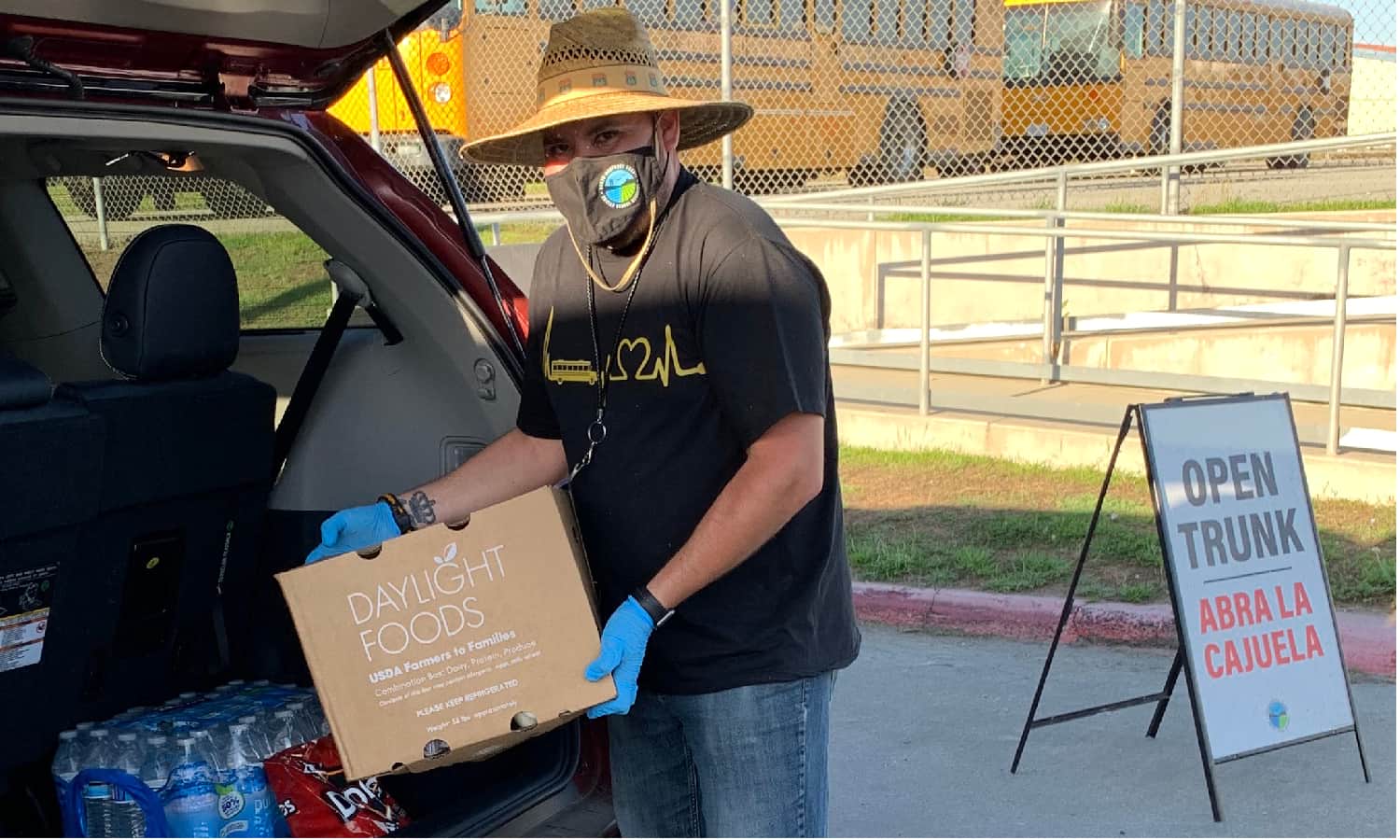School nutrition directors across the United States are finding new solutions to ensure students receive uninterrupted meal service.
Thirty million children in the U.S. rely on school for at least one of their daily meals and as a result of the pandemic, this figure is growing, according to a report from Save the Children. But an audit conducted by Burbio finds that over 30 percent of U.S. students are attending class entirely online during the 2020-21 school year, making food distribution more challenging.
With the U.S. Department of Agriculture (USDA) extension of the National Waiver to Allow Meal Pattern Flexibility in the Child Nutrition Program, individual states now have the ability to grant free meals to all students for the 2020-21 school year. This extension both increases the number of students covered under free meals and gives school districts more flexibility around meal composition and distribution.
But schools are facing logistical challenges to meet the increasing demand and distribute the meals as efficiently as possible.
In Bridgeton, New Jersey, students have the option of attending classes in person or from home. “Trying to solve the labor involved with fulfilling these needs is definitely a huge challenge for us,” Warren DeShields, Director of Food Services at Bridgeton Public Schools, tells Food Tank.
Despite this, schools are learning how to reach their students and ensure they receive the food they need. “While many systemic issues have been highlighted… districts are also finding innovative solutions,” Morgan McGhee, FoodCorps’ Director of School Nutrition Leadership, tells Food Tank.
Some districts, like the North Monterey County Unified School District, set up contactless pick-up programs. Sarah Doherty, Director of Child Nutrition for the district, tells Food Tank that they offer “a once a week meal distribution model” with additional options for working parents to drive through in the evenings.
Doherty explains that local partnerships are also proving useful during this time. As part of North Monterey Public Schools’ local procurement efforts, they developed partnerships with nearby bakeries and farms. The district also began buying bulk items such as tamales and pupusas to package in-house. “By streamlining our processes over time, [it] allowed us to procure more locally sourced items and add variety to our menu,” Doherty tells Food Tank.
Bridgeton Public Schools are also working to increase local partnerships. This work is a continuation of a project that has been underway since the implementation of the Community Eligibility Provision – a program that allows schools to feed all students breakfast and lunch for free – in 2017. The county currently works with local producers The Common Market and Seashore Fruit & Produce. “[We] pride ourselves on being a nutrition hub for our students,” DeShields tells Food Tank.
DeShields explains that his team is also working to get more food to families at convenient times. “We have had to pivot and change our curbside feeding times and locations to accommodate our families in conjunction with the USDA extended waivers,” he says.
Under the Child and Adult Care Food Program (CACFP), they are also able to provide dinner and snacks to students. DeShields tells Food Tank, “We are fortunate to have the CACFP dinner and p.m. snack program during the COVID-19 hardship…those dollars can be used to pay household bills and other expenses that our families desperately need assistance with.”
Nutrition directors are also finding solutions through the help of FoodCorps, which works to connect students with healthy food. The organization’s volunteers are helping districts identify new ways to support food education and food access for students. Using gardens as socially distant learning spaces and production sites, volunteers grow and deliver fresh fruits and vegetables to families.
“Access is a huge barrier for so many students and their families but education and exposure to foods with a high nutrient rich content is important as well,” McGhee tells Food Tank. COVID-19 offers an opportunity to focus on the importance of sustainable nutrition since schools now have the attention of their communities.
To get additional information to students, nutrition directors are using their platform to communicate the importance of nutrition. The North Monterey County staff “send[s] out weekly reminders about meals and monthly flyers,” Doherty tells Food Tank. These materials aim to educate families on nutrition and provide connections between consumers and local producers so that families have the tools they need to obtain and prepare healthy meals.
Doherty tells Food Tank, “We are committed to doing whatever it takes to meet the needs of our community.”
Content like this article is only possible because of Food Tank members. Please join today and get exclusive member benefits at FoodTank.com/Join.










